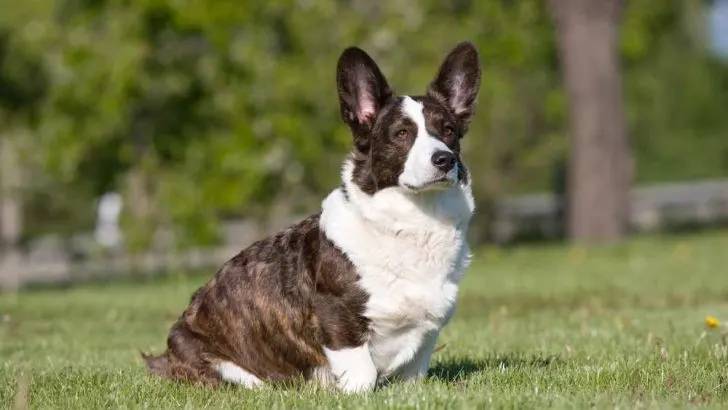If you are a true dog lover, it does not matter what breed your dog is. Still, smaller breeds are much more appropriate for indoor living, mainly if your home has limited space. Likewise, little dogs are a better fit for families with young children.
Therefore, if you too are searching for a small family dog – you came to the right place. Corgis are loyal and affectionate members of the canine family that are miniature enough to fit even the tiniest living spaces.
More importantly, Corgis are great with kids. They will guard your offsprings and tolerate their mischiefs. Active as they are, Corgis make excellent playmates that can drain that excess energy out of your children.
So, how to choose a Corgi? What do you need to know in order to be able to take good care of a Corgi puppy? What is a Corgi’s lifespan?
We will answer all these questions for you, but we have to make one thing clear first. Many people think that there is only one type of Corgi in the world.
Most of the time, when someone mentions this breed, people immediately picture a royal Corgi pup from the English court or popular cartoon “The Queen’s Corgi.” These people are not wrong since that dog is a pure-blood Corgi indeed – a Pembroke Welsh Corgi, to be precise.
The thing is that there are two types of Corgis that share a similar origin but are acknowledged as two separate breeds. Those are the already mentioned Pembroke Welsh Corgi and Cardigan Welsh Corgi. Even though at first look, you might be fooled into thinking; otherwise, these two breeds are quite different.
Pembrokes are slightly more popular at the time, so many of you probably know a thing or two about them. On the other hand, Cardigans might be somewhat neglected by the media and animation studios. Luckily for them, there are still numerous breed lovers worldwide. For them and you, we have decided to tell you everything about the Cardigan Welsh Corgi.
If you stay with us to the very end, you’ll most likely end up being a Cardigan lover too. Why not? We could not wish you a better thing than having such a loyal, kind-hearted friend!
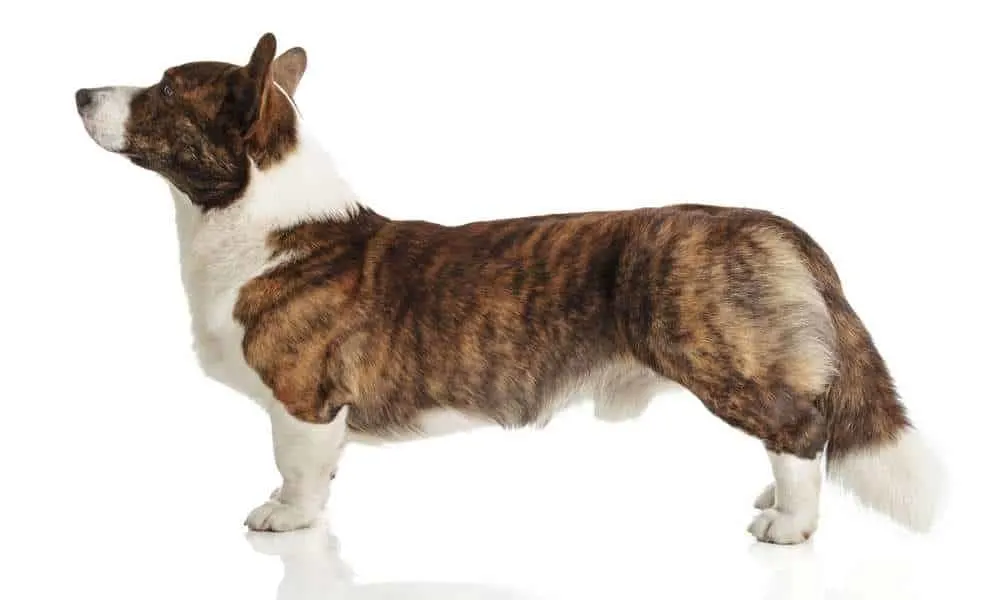
The History Of The Cardigan Welsh Corgi
The Cardigan Welsh Corgi is named for Cardiganshire, a little place in Wales, England. This breed has quite a long and impressive history and is one of the oldest dog breeds in Great Britain.
The origin of the Cardigan Welsh Corgi breed can be traced all the way back to 1200 BC. Their ancestors were the dogs brought to Wales by the Celts who migrated to Wales from Central Europe 3000 years ago. This original type was called the Bronant and was the close relative to the progenitors of the Dachshund.
One of the main differences between the Cardigan and the Pembroke Welsh Corgi breeds is that the latter are descendants of the dogs brought to Wales by Flemish weavers that got crossed with Cardigans. The weavers brought with them a Spitz-type of dog.
This Spitz breed got crossed with the original Corgi in some areas of Wales. The Pembroke Welsh Corgis are closely connected to Pembrokeshire in Wales, and thus their name too. The ancestors of the Pembroke Corgis are the same as the ones of Pomeranians and Samoyeds – the Cardigans have no association with these breeds.
The Viking invasion that occurred 1,000 years ago did not influence the Cardigan Corgi; neither did the subsequent influx of Flemish weavers. The Cardigans resided in areas untouched by those influences and thus retained their original blood.
The Cardigan Welsh Corgis are the descendants of the Teckel family. The Dachshund belongs to this family as well. In the beginning, the Cardigan Welsh Corgis were a transitional form between the already mentioned Teckel family and the Spitz family.
As you can see, Cardigan Welsh Corgis and Pembroke Welsh Corgis are two clearly distinct breeds. Their development lines separate early on, and they continued to run in geographically distinct areas of Wales. Nevertheless, both types of Corgis are part of the cultural heritage of Wales. They are the cultural treasures that should be preserved and protected.
When the first dog shows began in the late 1800s, the Corgis were far from popular with the public. It was not until the early 1920’s that the Corgis started to get appreciated, and their breed history began to be documented.
In 1925, the first Corgis were exhibited by the Kennel Club in Great Britain. At that time, Pembroke and Cardigan Welsh Corgis were not deemed as two separate dog breeds. Instead, the Kennel Club registered them as a single breed.
As a result, the two breeds were often crossed. However, the owners were rather unsatisfied with that situation. Many judges were more inclined towards Cardigans, while others preferred the Pembroke Corgis. All this led to much confusion and displeasure at dog shows. In the end, the Kennel Club finally corrected the error in 1934. The two breeds were registered as separate to the content of all breed lovers.

What Was The Original Role Of Cardigan Welsh Corgis?
At first, the Cardigans were not typical herding dogs. Their role was to go in front of the herd or cattle and clear the way. They relied on their big bark, speed, and agility to scare or chase off any potential predator. They were also trespassing herds and securing an appropriate area for grazing.
In time, the Cardigan Welsh Corgis started acting as true herders. They worked behind their master’s cattle as “drovers.” Soon enough, they became rather successful at driving cattle from the Welsh farms to markets all across England.
Probably, somewhere around this time, the Cardigan Welsh Corgis have been crossed with local sheepdogs. The aim was to turn them into more versatile working dogs. That is how these small dogs became not only excellent herding dogs, but also exquisite family dogs and guardians, and even quite successful vermin exterminators.

Who Were The First Famous Cardigan Welsh Corgis?
Bob Llwyd (1917)
Bob Llwyd was a highly influential dog during the 1920s. Even though he was an offspring of unregistered parents, he was still the role model for setting the very first breed standard. This red and white dog also produced the first champion of the Cardigan Welsh breed – his son Ch. Golden Arrow.
Golden Arrow (1928)
The Golden arrow was born in 1928 and was much like his father. He finished his first championship in 1931, but the cardigan breed did not get to enjoy the fame gained by this achievement for too long. Right about this time, the British Royal Family adopted the first Pembroke Welsh Corgi and made them ultra-popular worldwide. The Cardigan Welsh Corgis continued their story in the shadows of their Pembroke cousins up to this day. On the bright side, things seem to be looking up for them recently as their popularity has begun to rise.
Cassie (1925)
Cassie was the first female Corgi to arrive in the USA in June of 1932. When she was imported, Cassie has already made a name for herself by producing several high-quality Cardigans in England. Not even the fact that she was mismarked (white with brindle patches) could cloud her fame since everyone appreciated her ability to produce excellent stock.
Megan (1933)
Ch. Megan was whelped in 1933 and was the first Cardigan Welsh Corgi champion on American soil. She was a red and white bitch that stood out from the rest of the competition and left a permanent mark in the rich history of this breed. Each year, the Cardigan Welsh Corgi Club of America, Inc. holds a contest for champions only named the Megan Competition in honor of this first lady champion.
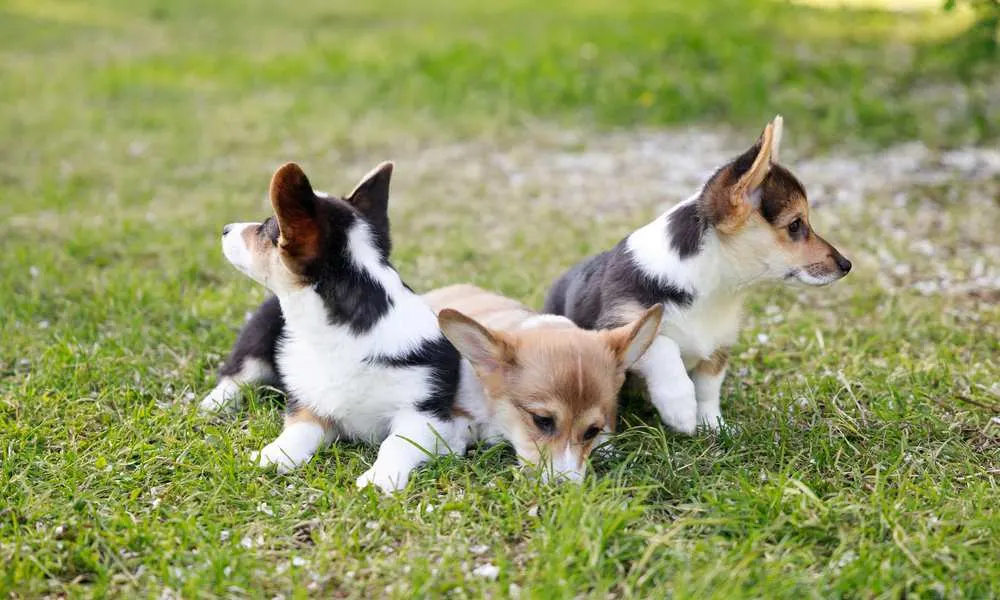
Appearance
Both Cardigan Welsh Corgis and Pembroke Welsh Corgis are small dogs with short legs and fox-like heads. They both have erect ears too, but with a slight difference. Namely, the Cardigans’ ears are rounded at the tips, while the Pembrokes’ are slightly pointed.
The second difference between these two breeds is quite apparent – Cardigans have a long tail, while the Pembrokes do not have much to wag with if anything at all. Even when Pembrokes are born with a small tail, the owners will most likely dock it while the dog is still young.
They say that the eyes are the mirror of the soul. It is true when it comes to dogs. The Cardigans are no exception. Their dark or deep blue eyes reveal their gentle nature and high intelligence. Blue eyes are permitted only for Blue Merle Cardigans, but we will speak about that in more detail later on when we discuss the official breed standards.
Cardigan Welsh Corgis should all have black noses. Notice how we said, “should”? Why is that, you might ask? Well, recently, many Cardigan Welsh Corgis are born with clear red or brown coats. These Cardigans have no black hairs whatsoever. It is all due to a genetic disorder. Namely, these dogs miss a receptor protein needed to produce black hair color. The missing receptor protein influences Cardigans’ noses too, and thus some of them end up with a brown nose. Only blue merles sometimes have a butterfly-shaped nose.
Cardigan Welsh Corgis are slightly larger than their relatives and stand about 10 to 12 inches (25 to 30.5 cm) tall. They weigh a bit more since they are heavier-boned – usually, between 25 to 38 pounds (11 to 17 kg).
The Cardigan Welsh Corgi need not be red and white like Pembrokes most often are. You can find Cardigans in various color combinations, such as:
- Reddish-brown
- Brindle
- Sable
- Black with tan
- Black with white
- Blue-gray (blue merle) with black mottling.
No matter what color they are, Cardigans can have white markings too. The flashes of white color often occur on their neck, and sometimes they resemble a collar. White can be present on your Cardigan’s muzzle, chest, legs, and underpants too. Many Cardigan Welsh Corgis have the tip of their tail white as well.
If you want your Cardi to thrive at dog exhibits, he or she should not have too much white on the head. Judges particularly dislike dogs that have white markings around the eyes. If your Cardigan is predominantly white, he or she can even be disqualified from the dog exhibit.
Cardigans have a beautiful, rich coat. It is not too long, but it is rather thick. Therefore, it requires regular brushing. You do not need to do it daily, but try to make a habit of doing it at least twice a week. In this way, you will prevent your dog from shedding all-around your house. Cardigans enjoy it, too, so you will spend time connecting with your new best friend rather than cleaning dog hairs off of your couch – it is more fun for both you and your pet, isn’t it?
Cardigan Welsh Corgis’ coat is weatherproof. Therefore, they can handle almost any climate quite well. It is important to know this if you move a lot – your Cardigan can adapt quickly and easily.
If you want to take your Corgi to dog exhibits and hope to win some prize or trophy, you should find a puppy that fits into the official standard of the Cardigan Welsh Corgi. We have made a short outline of all the requirements for this breed. It should help you choose a future champion Cardigan puppy.
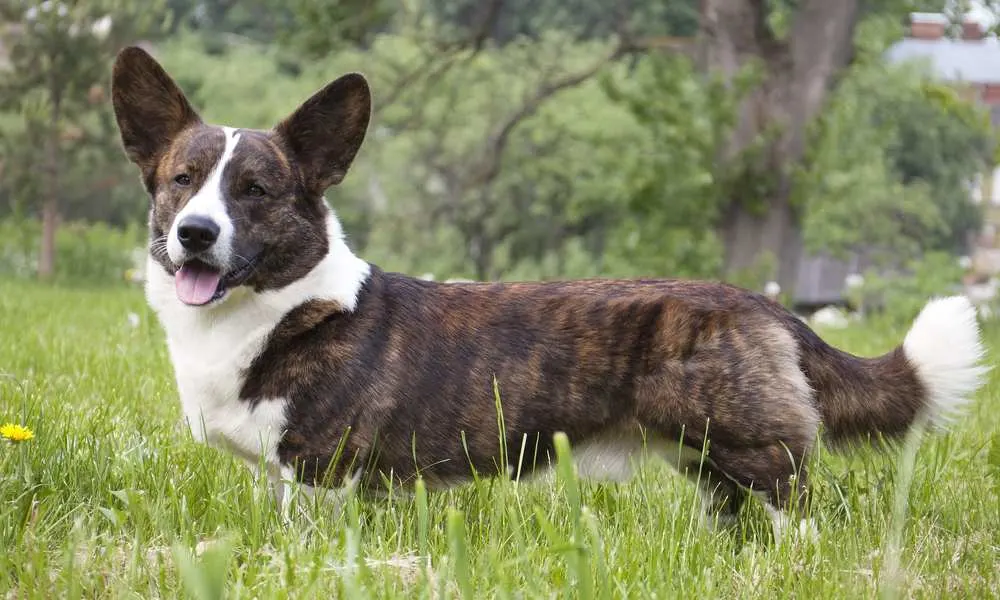
Official Standard Of The Cardigan Welsh Corgi
General Impression:
- A powerful, sturdily-built, small dog
- Quick and agile
- Capable of endurance
- Intelligent
General Appearance:
- Moderately heavy-boned
- Low set
- Deep chest
- Long in proportion to the height
- Low tail set
Size & Proportion:
- When standing naturally, a Cardigan should be from 10.5 to 12.5 inches measuring from the ground to the point of the withers.
- 1.8:1 is the ideal length to height ratio (make sure you measure your dog length from the point of the breast bone to the back of the hip)
- The ideal weight should be between 30 to 38 pounds for male dogs and 25 to 34 pounds for bitches
The Faults:
Being oversized or undersized
Having a poor overall balance
Head:
- The head should be in accordance with the overall size of the dog. It mustn’t appear too large and heavy nor too small.
- It should be in accordance with the sex of your dog too.
Skull-top:
- Moderately wide
- Flat between the ears
- Exhibiting no prominence of occiput
- The small depression between the eyes
Expression:
- Gentle and friendly
- Alert but not aggressive
- Friendly towards people and other dogs
Eyes:
- Medium to large
- Not bulging
- Widely set
- Dark rims and distinct corners.
- In accordance with coat color. All Corgis, except for blue merles, have dark, round eyes. Blue merle Corgis can have blue eyes or partially blue eyes (one dark eye and one blue eye)
The Faults: Blue eye in any other coat color than blue merle calls for immediate disqualification.
Ears:
- Large and prominent
- In proportion to the size of the dog
- Slightly rounded tips
- Slightly wider at the base
- Erect
The Faults:
Small ears or pointed ears are considered to be serious faults.
If ears are dopped – it is a sure disqualification.
Cheeks:
- Flat
- A bit chiseled where they meet the fore face and under the eyes.
- The cheekbone is not prominent.
Muzzle:
- It should be measured from the tip of the nose to the base of the stop.
- The ideal proportions are 3: 5 (muzzle to the skull)
- Rounded
- Not blunt nor pointed
- The plane of the muzzle should be parallel to that of the skull,
Nose:
- Solid black (the only exceptions are blue merles and their butterfly noses)
Lips:
- Clean lines
- Even all around
Jaw:
- Clean and strong
- Well-defined underjaw; moderately deep
- It should reach the base of the nose.
- Rounded at the chin
Teeth:
- Regular
- Strong
- Scissor bite ( upper incisors going a bit over lower incisors.)
The Faults: The overshot and undershot bite are both considered to be serious faults.
Neck:
- Moderately long
- Muscular
- In proportion to the Corgi’s build
- Well-set on and fitting the shoulders.
Chest:
- Moderately broad
- Prominent breastbone
- Deep brisket
- Well-sprung ribs extending well back
Loin:
- Short but strong
- Moderately tucked up
- Well-defined waist
Croup:
- Sloping slightly downward towards the tail
Tail:
- Positioned low on the body
- Reaches below hock
- Carried low while the dog is standing or moving slowly.
- Parallel to the ground when at a dead run
- Lifted when the dog is excited,
- It is never curled over the dog’s back.
The Faults: High tail set.
Shoulders:
- Sloping downward and outward
- Long, laid back shoulder blade (scapula)
- Humerus almost equally long as scapula
Elbows:
- Closely fitted – neither too loose nor too tied.
Forearms:
- Ulna and radius are slightly curved and fit the spring of ribs.
- The wrists (carpal joints) are a bit closer to one another than the elbows.
- Strong and flexible pasterns
- Removed dewclaws
Front Feet:
- Large and round
- Well-filled pads
- Pointing slightly outward (no more than 30 degrees from centerline), balancing the shoulders’ width.
- The toes mustn’t be splayed.
- The Cardigans’ front should be neither straight nor too crooked. The bone should be heavy but not excessively, or it would compromise the dog’s agility.
The Faults:
There should be no knuckling over.
Both straight front and fiddle front are considered to be serious faults.
Hindquarters:
- Muscular and strong
- Slightly narrower than shoulders
- The hipbone (pelvis) should slope downward with the croup and form a right angle with the femur.
- Moderate angulation at the stifle
- Hocks should be let down.
- Metatarsi should be parallel to one another and perpendicular to the ground.
- Dewclaws need to be removed.
Back Feet:
- They should point straight ahead.
- Slightly smaller than front feet
- More oval than front feet
- Arched toes
- Well-filled pads
Coat:
- Medium length
- Dense and relatively smooth
- The other hairs have a slightly harsh structure and are not wiry or silky.
- The undercoat is thick, short, and soft to the touch.
- Weather-resistant
- Short hair on ears, head, the legs
- Medium hair on the body
- Slightly longer and thicker hair in ruff, underneath the Cardigans’ tail and on the backs of their thighs
- The coat sheds, so the seasonal lack of it is not severely penalized.
The Faults:
When the coat appears fluffy, wiry, curly, or silky.
Coat of uniform length or too long or short coat.
Trimmed coat, except around feet.
Color:
- All shades of red, brindle and sable, black with or without tan points, blue merle, marbled.
- Flashes of white around the neck, muzzle, legs, on the chest or underpants, at the tip of the tail.
The Faults:
Any color that is not specified as allowed.
When white color dominates, especially on the head.
White around the eyes is considered a serious fault too.
Gait:
- Smooth and free
- Effortless
- Forelegs should reach forward when the dog moves at a trot as well as be in good balance with driving action of hind legs.
- Long free stride in front
- Legs incline slightly inward.
- When trotting, hind legs reach well under the body.
- Feet must be parallel to the line of motion, not swing out or interfere with one another.
The Faults:
Short choppy movement.
High-stepping gait.
Close or overly wide coming or going.
Temperament:
- Even-tempered
- Not shy
- Loyal
- Affectionate
- Easily adaptable
- Never vicious or aggressive
Now that you know all the official standards for the Cardigan Welsh Corgis, you can assess your pet and decide whether or not you should apply him or her for a dog contest. Here is a short overview of all the faults that are severely penalized or call for disqualification:
- Blue eyes and partially blue eyes for any color except blue merle
- Drop ears
- The nose of any other color except solid black (the blue merles are the exception to this rule too)
- Coat of any color other than specified
- Predominantly white body or head
You should not be disappointed even if you determine that your dog does not meet all the specified standards. Your pet will be as loyal as a friend, even if he or she does not win any trophy. Cardigan Corgis have a loveable personality that will surely change your life for the better. Stay with us to learn more about it!

Personality
First and foremost, Cardigan Welsh Corgis are herding dogs, and there lies their true nature. They prefer spending time outdoors, preferably out in nature, but city streets will do just fine too. Cardis are athletic dogs with lots of energy, and you need to help them put it to good use.
These rugged herders will enjoy spending time on your couch, but they need physical activity and mental stimulation to develop properly and stay healthy. If they are inactive, they will soon become overweight, which will put even more stress on their long back and restrict their movement even further.
The good news is that Cardigans enjoy playing with kids and other animals, which is a great way for both parties to spend excess energy and burn some calories.
Besides, Cardigan Welsh Corgis are faithful and affectionate dogs, and as such, they are perfect family pets. They get along with young children and other pets quite well, especially if they are properly socialized from an early age.
Cardis, as many breed lovers call these small dogs, can be trained rather easily. It is important to start at an early age. They are highly intelligent and learn commands quite quickly. The only problem might be their stubborn streak. You must show them that you are the boss from the very start.
It might come as a surprise considering their size, but Cardigan Welsh Corgis are great guardian dogs. They might not be capable of tackling a large enemy, but they are brave, agile, and have a big bark that scares off most potential intruders and attackers.
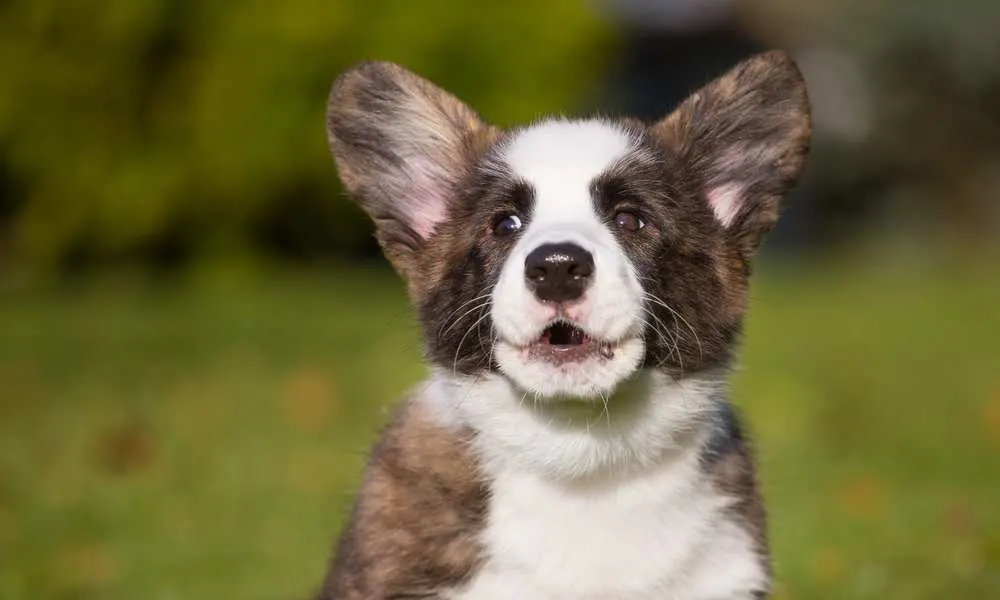
Are Cardigans Aggressive?
In general, Cardigan Welsh Corgis are neither aggressive nor destructive. Still, every Corgi has a unique personality that is largely shaped by how he or she is being treated and raised. If a dog is abused, neglected, or mistreated in any other way – there are no guarantees that he or she will not become problematic. Cardigans are no exception. For example, they can make quite a mess of your home if you live them alone for too long.
Every Cardigan Corgi will deal with different problems, just like we do, but some will cope better than others. Many people ask if there are some gender-related issues they should worry about. The personality does not have much to do with gender, though. You should not choose a Cardigan puppy only because it is male or female – you are better off observing the parents’ behavior and finding a reputable breeder.
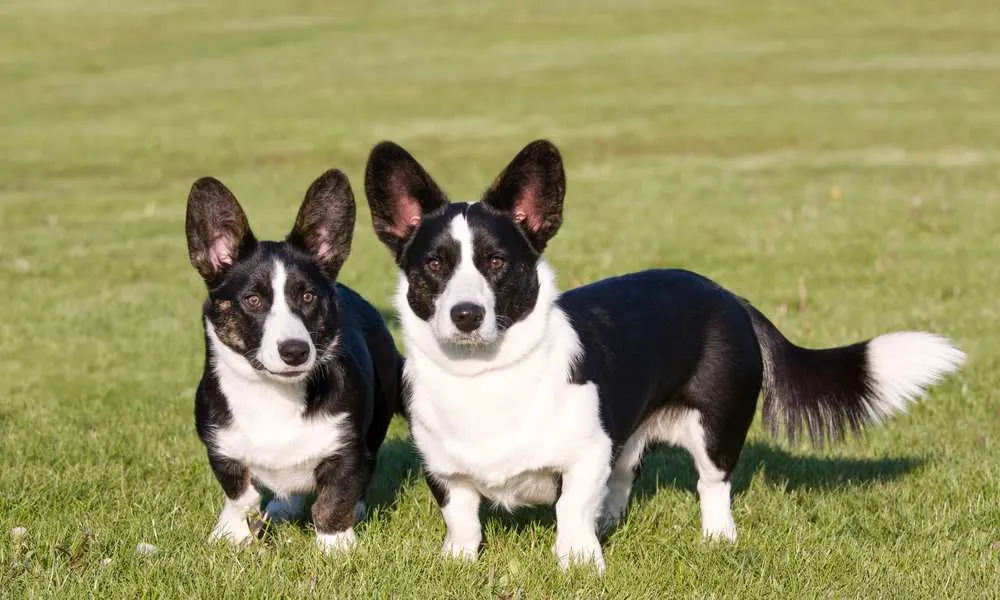
Are There Any Particular Traits That Apply To Female And Male Cardigan Welsh Corgis?
As we have already said, a lot depends on a pup, its parents, and how it was raised and treated before you brought it to your home. There are exceptions to every rule, so even though there are some proclaimed differences between male and female Cardis, you should not judge a puppy only based on that. You do not want to rely on prejudices when choosing your new best friend, don’t you?
| Characteristics Of The Female Cardigan Welsh Corgi | Characteristics Of The Male Cardigan Welsh Corgi | |
|---|---|---|
| Pros: | – Female pups are more affectionate than males. – They are highly unlikely to make a mess when left home alone. – Female Cardigans are especially fond of children and act very protective of them. | – Male Cardis are easier to train since they accept the owner’s authority more easily. – They are not disobedient as often as females and do not show their independence as much. – They lack maternal instinct and might not be too interested in our kids. – More laid-back |
| Cons: | – Female pups are more independent than males and often act more stubborn. – They enjoy the owner’s attention more than male pups. – Female pups are more stubborn and thus more difficult to train. They often fight for their independence during obedience training. You have to try to earn their respect. – Spayed females are much more obedient. If you want your female Cardi to procreate, be prepared for mood swings when she is in heat. | – Not as affectionate as female pups – They seem cold and uninterested in you at times. – When not neutered, male Cardigans go wild in the presence of a female dog in heat. They can even try to escape, so be careful. |
If you want to learn more about Corgis’ personality, temperament, and gender differences, go here.

Diet Recommendations
Different dog breeds have different needs and require a meal plan designed for them. Corgis are no exception, so it would be best to consult a vet as soon as you get a Cardi pooch.
If you remember, we have already warned you that Cardigan Welsh Corgis have a tendency to become overweight. Physical activity can help prevent this, but a well-balanced diet is crucial as well.
When you plan your Cardigan’s diet, you need to consider the dog’s age as well. A vet can help you by measuring your dog’s weight and height and determining how much food your Corgi needs to stay healthy and feel energized at all times.
Therefore, you should visit a vet as soon as you get a Cardigan Welsh Corgi puppy. If you start feeding your dog properly from day one, you will not create any bad habits that are hard to eradicate later on.
Being prone to becoming obese, Cardigan Corgis are best fed only when it is meal time. You must not feel tempted to feed them off of your plate or give them any leftovers. Even the treats should be strictly limited and used for training purposes only.
Like any dog, Cardigan Corgis should eat mostly protein-based food. Meat comes first, but veggies can be a great means to keep the weight under control too. Corgis diet should comprise of 50 – 75% of meat protein, about 15 – 18% of fat, and approximately 25% of carbohydrates.
High-quality dog food will provide them with all the essential nutrients and secure enough energy. Try to keep an eye on how many calories your Cardi has each day – it is the best way to prevent weight gain and weight-related health issues.
An average Cardigan Welsh Corgi requires about 870 calories per day, and it is your job to make sure your Cardi does not eat more than that. If your dog is already overweight, feel free to feed him fewer calories- he or she will be perfectly content even with 100 calories less!
Cardigan Welsh Corgis should not be given one big meal but rather two smaller ones. In this way, their metabolism will speed up, and it will be much easier to maintain their healthy weight.
Do not let the fact that Cardigans are prone to being overweight deter you from getting one. Every breed has a weak spot, but if you love and take good care of your dog, there is no difficulty the two of you cannot overpass. Our diet recommendations will help you down that road, as well as the following detailed list of health concerns that affect Cardigans.
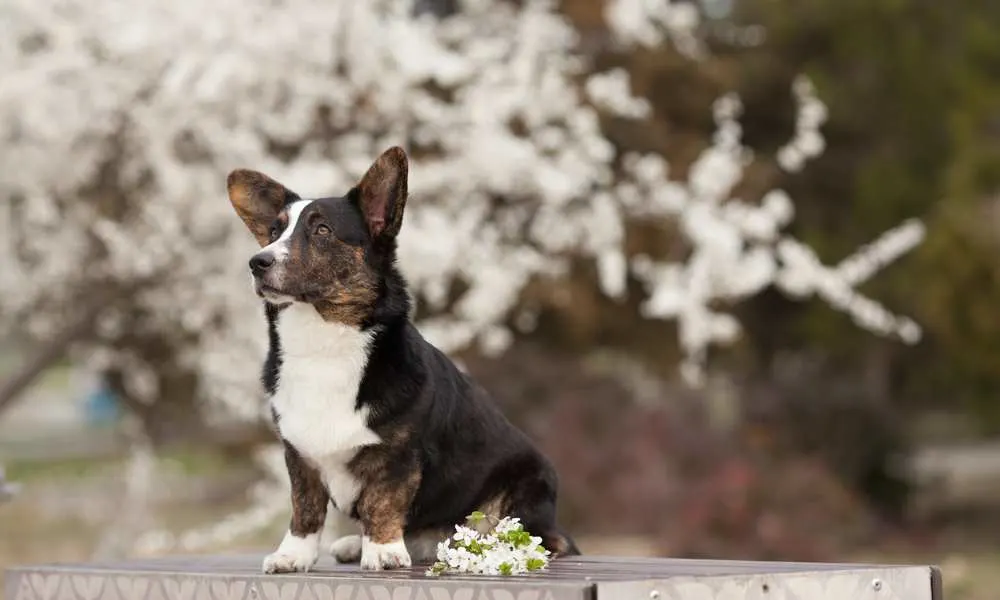
Common Health Concerns That Affect Cardigan Welsh Corgis
While the Cardigan Welsh Corgis are generally a quite healthy breed, there are still a few health concerns that you should get informed about. All of these health conditions are not reserved for Corgis only – they can affect most other breeds.
Our goal is to inform you of all the health concerns that interest you as an Cardigan Welsh Corgi owner. The information we are about to provide should not replace a consultation and examination with your dog’s vet. Quite the opposite, it should enable you to recognize health-related problems early on so that you can take your dog to the vet on time, and he or she can be treated in a timely manner.
Let us tell you the good news right away – your Cardigan Welsh Corgi is not prone to many diseases. Here is a detailed list of all the diseases that most often affect Cardigans:
Degenerative Myelopathy (DM)
Degenerative myelopathy (DM) is a condition that affects the dog’s spine and has a bad prognosis. This fatal disease cannot be prevented or treated; the only thing you can do is test your Cardigan to determine if he or she has a gene that increases the chances of developing this health condition at the age of eight or nine. Responsible breeders and owners test the puppies and do not breed the dogs that are at risk or suffer from this disease.
These are the symptoms of DM:
- Loss of coordination
- Wobbling
- Dragging the back feet
- Having difficulty to stand or stand up
- Inability to walk
Since there is no cure for this disease, you can only provide adequate nursing care and physical rehabilitation. The harnesses and carts can help your Cardigan stay mobile.
Von Willebrand’s Disease
Von Willebrand’s disease is a blood-clotting disease, but it is rarely life-threatening. You should test your puppy for it, especially if you are planning surgical intervention or breeding. In this way, you can prevent your dog from losing too much blood or passing on this genetic disorder to new generations of Cardigans.
These are the symptoms of Von Willebrand’s Disease:
- Bloody stool
- Nose and gum bleeding.
Hip And Elbow dysplasia
Hip and elbow dysplasia affect many dog breeds. The affected dogs have either underdeveloped hip/elbow joints, or the condition results from an injury that damaged their cartilage. Sadly, it can be painful and is sure to reduce the quality of your dog’s life. Proper diet and exercise regime can help lower the risk of this disease.
The treatment includes:
- Supplements that contain glucosamine
- Anti-inflammatory medications
- Joint fluid modifiers
Progressive Retinal Atrophy (PRA) or Retinal Dysplasia (RD)
Retinal dysplasia (RD) is a malformation within the retina that reduces your dog’s vision. It is a genetic disorder, and thus dogs affected by it should not be bred as to avoid passing it on to future generations. Sadly, there is still no cure, and the dog will probably lose its vision. The good news is that the affected dog does not feel any pain.
The symptoms of RD are the following:
- Color changes within the eye
- Hesitancy to jump off your bed or couch or go down or up the stairs.
- Being clumsy
- Bumping into objects
- Not being able to find things.
- Not being able to recognize people or objects.
You can help your Cardigan by securing a safe environment for him or her to move freely. Avoid making any changes, such as moving furniture.

What Tests Should You Run On Your Cardigan Welsh Corgi?
- OFA or PennHip test for hip dysplasia
- Genetic test for detecting a PRA carrier
- The genetic test that identifies puppies with an increased risk of developing degenerative myelopathy (DM)
If you are buying a Cardigan Welsh puppy from a breeder, ask for all the relevant test results. If the breeder is unable to provide any test results, you check the online list of all the dogs that have been tested for PRA (or cleared of it by their pedigree). The list can be found on the Cardigan Welsh Corgi Club of America (CWCCA) website.
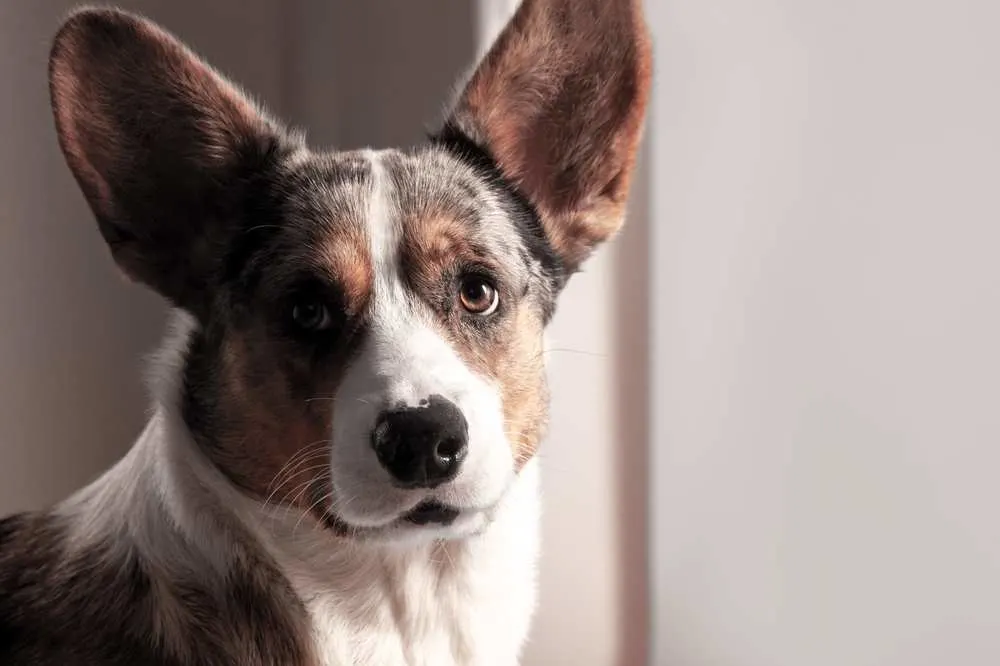
Cardigan Welsh Corgi Life Expectancy
How Long Does A Cardigan Welsh Corgi Live?
Cardigan Welsh Corgis are small dogs and can thus live longer than their large relatives. You can enjoy approximately 15 years of love with your Cardi dog friend. Some Cardigans live 2-3 years more than that.
How Much Is That When Translated In Dog Years?
There is a formula that you can use to convert human years into dog years and vice versa. The first year of your Cardigan’s life equals fifteen human years. The second-year equals nine human years. From the third year on, each human year equals five dog years. So, let’s calculate together:
15 + 9 + (13 x 5) = 24 + 65 = 89
With proper care and a lot of love and affection, your Cardigan can live to be ninety. The following care recommendations will help you make the best out of your time with your Cardi!
Learn More: Are Corgis Endangered?
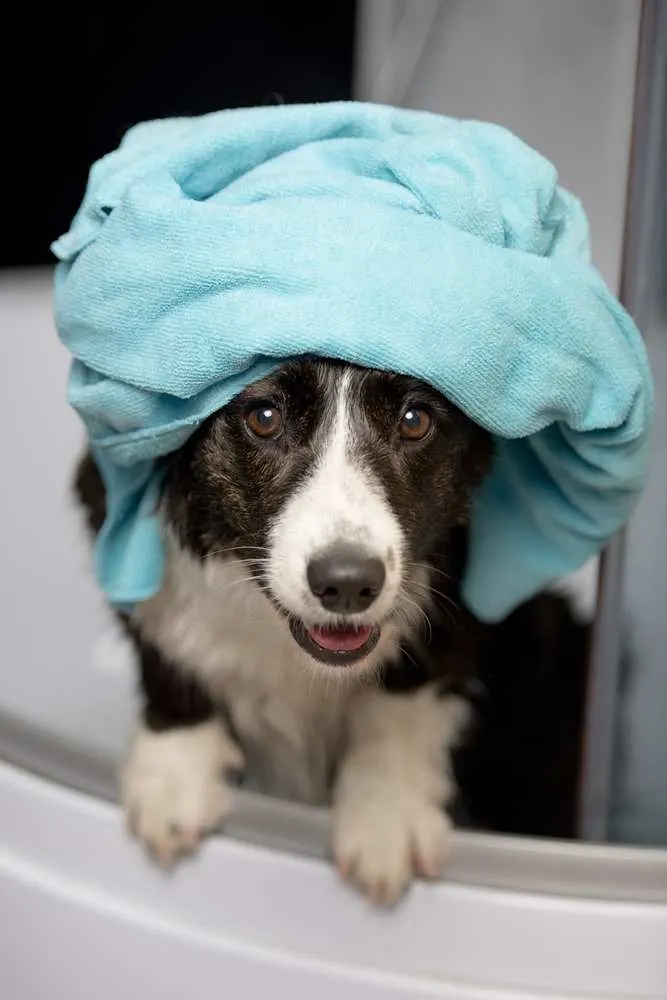
Proper Care And Grooming
Cardigan Welsh Corgis are adaptable dogs that can thrive in almost every climate and environment. They did not used to be family dogs but herding dogs that spent their time out in harsh conditions and ugly weather. Their weatherproof coat protects them from the elements but is also rather easy to maintain. We’ll tell you more about that when we speak of grooming.
We have already told you that Cardigans require the following:
- Early socialization
- Regular physical activity and exercising
- Plenty of outdoor time
- Mental stimulation
- Strong leadership from day one
- Well-balanced diet
You should also:
- Follow up on all the required examinations and tests.
- Not miss any vaccines.
- Consult your vet whenever you notice any unusual behavior or symptoms
Extra Advice:
Sign up for pet health insurance! In this way, your Cardigan will have the best care possible whenever he or she needs it. Your finances will be protected, as well.
Boredom is Cardigans’ worst enemy. Bored Cardis are naughty Cardis!
Cardigan Welsh Corgis are also prone to separation anxiety. Therefore, avoid leaving them alone for too long. They thrive from spending quality time with their family and enjoy herding.
Deal with disobedience ASAP! If you don’t, your Cardigan can grow up to become quite a stubborn dog that you will not be able to control.
What About Grooming?
Cardigan Welsh Corgis are rather easy to maintain. Their thick coat is very low-maintenance.
Mud and water do not stick to their waterproof fur, and thus there is no need to clean it every time you get back from the outside – even in bad weather.
Cardigans should have a bath when they are really dirty – twice or even once a month should do it. Their medium-length hair should be brushed each day if you want them to look their best, but it will only take five minutes or so.
You will need a metal comb with medium-length. Be gentle and make sure you cover all the areas. If you come across matted fur or tangles, slow down and be gentle, or you can hurt your Cardi. Also, check for any skin irritations or bald spots – those can be signs of some skin conditions that require treatment. If you notice anything out of the ordinary, consult your vet.
Regular combing will help control the Cardigan’s shedding. Namely, Cardigan Welsh Corgis shed rather heavy due to having a double coat.

How To Deal With Cardigan’s Shedding?
The Cardigans’ undercoat sheds once a year, most likely in spring. At this time, your home will be covered in hair. Brushing out the loose hair can help, but only if you do it at least once a day.
It would be best to use a pin brush for this task.
When you are finished brushing your Cardigan, you should use a metal comb to smooth the fur back down. If you prefer a fluffy-looking pet, you can leave it be.
Some Corgis will shed again after the summer season. If you live in a warm climate, this shedding will not be too heavy.
How To Bathe Your Cardigan? How Often Should You Do It?
Thanks to their weatherproof fur, Cardigan Welsh Corgis do not need too many baths. During the shedding season, the baths can help remove the loose hair and keep your home clean.
Here is the advice you should remember:
- Always use a dog shampoo.
- Bath your Cardi with lukewarm water
- Make sure you rinse all the shampoo out of your dog’s fur.
- When you finish, pat the Cardi with a towel and take them out in the sun to dry out naturally. If it is cold, you should best use the blowdryer on the lowest setting.
Read More: Learn How To Bathe A Corgi
How To Groom Your Cardigan’s Teeth, Nails, And Ears?
Before you start grooming your Cardigan Welsh Corgi, make sure he feels safe and relaxed. Be patient and gentle. In time, your Corgi will grow to love and enjoy the grooming sessions.
Every once in a while, check your Cardigan’s ears for buildup and infections. If you need to clean them, use a cotton ball to clean it all out. You can also use a dog-specific ear cleaning solution for even better results.
You need to take care of your Cardigan’s teeth, too, by brushing them at least once a week. This will help prevent buildup and bad breath. It will keep your Cardigan’s gums healthy too.
Every couple of weeks, trim your dog’s nails. Do it at least once a month, or you will have to deal with scratches on the floor and furniture.
Enjoy your time with your Cardigan Welsh Corgi!

